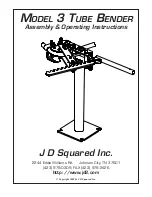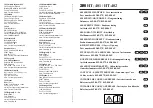
33
3) Oranges, small pomelos
Article
Recommended Settings & Procedures
Explanation
Fixing Prong
HP-MO
Optimal
Peeler blade
F-3, F-4
For removing the outer skin (flavedo)
S-1, S-2
To remove the inner skin (albedo)
Push plate
Large
It is exclusive.
Settings
Skin Thickness
4~6
For removing the inner skin (albedo)
0~5
Adjust according to the thickness of the inner skin (albedo)
Spin Speed
4~6
Adjust according to the softness of the fruit.
Additional adjustments
Peeling range
Angle
L to R
0°
180°
10°– 160°
To remove the outer skin (flavedo)
0°
180°
20° 140°
~
-
~
30° ~ 170°
To remove the inner skin (albedo)
Peeling
Direction
L <- R
To prevent the fruit from slipping off the prong.
Peeling Throw
NO
When peeling the outer skin only
None – half
When removing the inner (albedo) skin
Peeling Finish
Normal
Optimal
Preparation
None
To peel the outer skin (flavedo)
Cut off the top portion at a position where the fruit
can be clearly seen.
To remove the inner skin (albedo)
Slice off
Make a vertical score (cut) to reduce fouling of
the blade during peeling.
Even fruit of the same size can have albedos of different thick-
ness. Adjust the settings accordingly.
Fixing Direction
Insert the prong into the upper axis of the fruit.
Removing a small part of the fruit apex, such as
that on a navel orange, will facilitate mounting of
the fruit on the prong.
Optimal
● The best way to peel the above fruit is to cut off the top, and separate the fruit into groups depend-
ing on the thickness of the albedo, which will differ from item to item.
● In order to skillfully peel oranges (amanatsu), we recommend the procedure on
P34 "How to
Peel Citrus Well".
Summary of Contents for FAP-1001
Page 43: ...42 MEMO ...











































